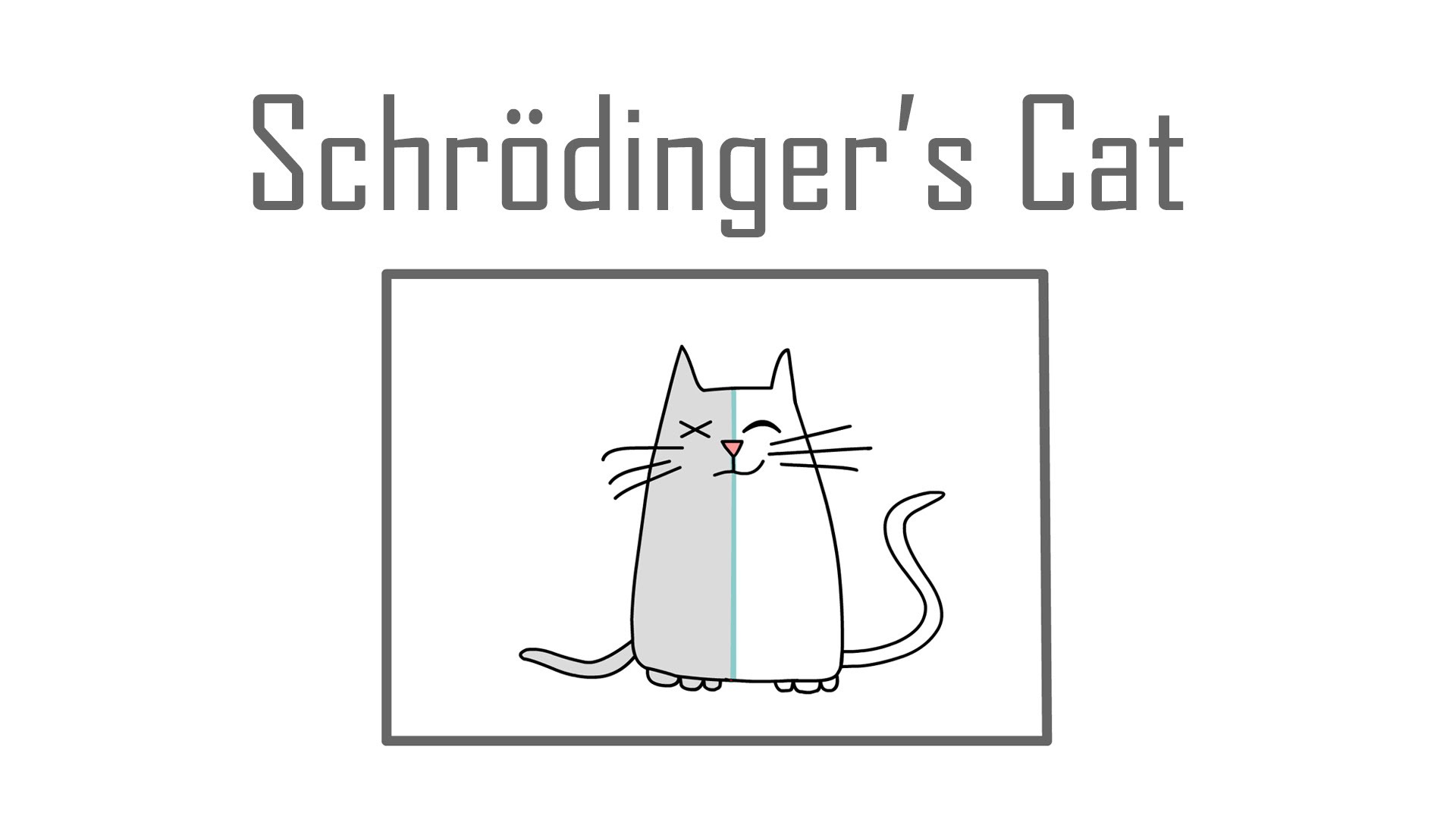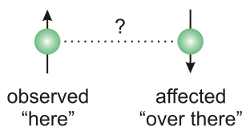Basic Quantum
Mechanics
Quantum computers use certain aspects of quantum mechanics to perform operations on data.
The two main principles of quantum mechanics being used are superposition and quantum entanglement.
| Superposition |
Quantum Entanglement |
| Quantum
superposition is a principle of quantum theory that
claims that a particle is in all possible states as long as the state is unknown and it is not being observed. When the particle is observed, its state will be known. This is demonstrated in the Schrodinger's Cat thought experiment. Schrodinger's Cat illustrates a scenario where a cat is locked in a box with a potentially dangerous sub-atomic particle (depending on the state). According to quantum theory, the cat is both alive and dead at the same time until the box has been opened and the cat has been observed. |
Quantum
entanglement is another principle of quantum theory. Quantum entanglement is when multiple particles interact in such a way that their states are all independent from one another. When two particles are entangled and the state of one particle is known, the other particle is in the opposite state. |
 Picture from: https://www.youtube.com/watch?v=UjaAxUO6-Uw |
 Picture from: https://www.picoquant.com |
< Previous Page || Next Page >